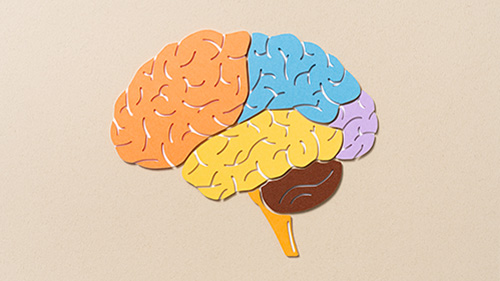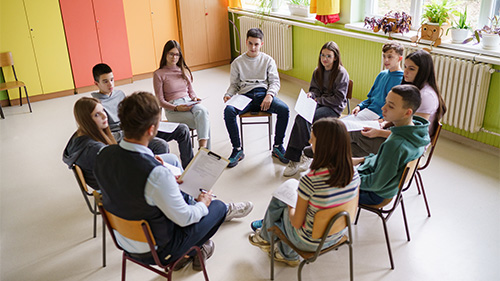Using Cognitive Science to Facilitate Better Review for the AP Psych Exam
Review season is upon us. With preparations for upcoming AP exams, finals, and other year-end assessments principals in cognitive science can help...
AP & Honors Mathematics
Explore Wiley titles to support both AP and Honors mathematics instruction.
Literacy Skills & Intensive Reading
Connections: Reading – Grades 6–12
Empower student success with a proven intensive reading program that develops strong reading skills in striving readers.
Drama, Speech & Debate
Basic Drama Projects 10th Edition
Build students’ confidence and competence with comprehensive, project-based theatre instruction.
Literature
Connections: Literature
Support learners as they study dynamic, relevant texts and bring the richness of diverse voices to students through literature.
Literature & Thought
Develop critical thinking, reading, and writing across literacy themes, genres, historical eras, and current events.
Language Arts
Vocabu-Lit® – Grades 6–12
Help students build word power using high-quality contemporary and classic literature, nonfiction, essays, and more.
Connections: Writing & Language
Help students develop grammar, usage, mechanics, vocabulary, spelling, and writing and editing skills.
Reading/English Language Arts
Measuring Up to the English Language Arts Standards
Incorporate standards-driven teaching strategies to complement your ELA curriculum.
English Language Learners
Measuring Up for English Language Learners
Incorporate research-based best practices for ELLs with an approach that includes a focus on language acquisition strategies.
Mathematics
Measuring Up to the Mathematics Standards
Incorporate standards-driven teaching strategies to complement your mathematics curriculum.
Foundations
Measuring Up Foundations
Help students master foundational math skills that are critical for students to find academic success.
Science
Measuring Up to the Next Generation Science Standards
Give students comprehensive NGSS coverage while targeting instruction and providing rigorous standards practice.
Assessment
Measuring Up Live
Deliver innovative assessment and practice technology designed to offer data-driven instructional support.
For a better website experience, please confirm you are in:

AP® Psychology is just as much a class with an abundance of new vocabulary as it is an introduction into the field of psychology. Students often confuse terms because their meanings overlap or they are similar to one another. These terms are often seen on the free-response portion of the exam to determine which students have mastered the meaning and application of terms and which are still working towards mastery.
Understanding the difference between the following five pairs of terms will help students to understand their meaning, keep them distinct from one another, and apply them to practical situations.
Fundamental Attribution Error: The tendency to attribute the behavior of others to internal causes.
Actor-Observer Bias: The tendency to attribute others’ behavior to internal causes while attributing our own behavior to external or situational causes.
In order to keep these principles separate from one another, students can ask themselves if they are only judging someone else’s behavior (fundamental attribution error) or if they are also exhibiting the behavior and making situational attributions about their own behaviors while making dispositional attributions about others’ behavior.
Examples
Fundamental Attribution Error: You assume that a student who is late for class is tardy because they are unmotivated and lazy (dispositional attribution).
Actor-Observer Bias: I am late for class because I was stuck in traffic but my colleague is late for class because they are lazy and made no effort to arrive on time.
Random Selection: Random selection is the process of selecting participants from the population to participate in a study. Every person in the population should have an equal chance of being selected to participate in the study. This should be used for all types of studies (correlational, descriptive, experimental).
Random Assignment: Once the researcher has determined who will participate in an experiment, they must randomly place each participant into either the control or experimental condition. All participants should have an equal chance of being placed into either the control or the experimental condition. Not all studies will have this process as there is not always a control group, but this is an essential element of experimental research.
Examples
Random Selection: If a researcher wants to determine if a mnemonic device will help students learn material better, they may randomly select from all students at their high school (population) by asking a computer to randomly select 200 student ID numbers.
Random Assignment: Once the participants have been selected, their student ID numbers should once again be placed into a random computer generator and 100 will be assigned to the experimental (mnemonic) condition and 100 to the control condition.
Negative Reinforcement: Increases a behavior by removing an aversive stimulus.
Positive Punishment: Decreases a behavior by adding an unpleasant stimulus.
To help students understand the difference between reinforcement and punishment, you can use the analogy of a building that is reinforced to make it stronger—something can be intended as reinforcement but if it does not work in increasing a behavior, it is not reinforcement.
Similarly, punishment must decrease a behavior. Try to avoid words like “good” and “bad.” Negative and positive should be considered in the same context as a math class. Negative subtracts something and positive adds. Ask students to concentrate on the outcome rather than the intent.
Examples
Negative Reinforcement: Someone with obsessive-compulsive disorder washes their hands because it decreases their levels of anxiety. Because the anxiety is removed, they are more likely to wash their hands again and again.
Positive Punishment: If a dog runs away on a walk, his owner may add a leash while on their next walk which will decrease the likelihood that the dog will run away again.
Availability Heuristic: Judging how likely a certain event is to happen based on how easily information regarding this topic is available.
Representativeness Heuristic: A mental shortcut in which one thinks of the best example or a prototype of a given category.
Availability heuristics are generally about events that stick in your mind because they are vivid and easily retrieved from memory even if they are not typical of that event. Representivenss heuristics represent a category, and it is representative of that category. When asked to consider a chair, students will likely think of a chair in school or one that they sit in often at home. There are many types of chairs, wheelchairs, stools, and beanbag chairs, but these are generally not the most typical examples.
Examples
Availability Heuristic: After hearing about a plane crash on television, many individuals will be afraid to fly even though the likelihood that they were in more danger was slight because when they think about flying, this plane crash will be the first thing that pops into their mind.
Representativeness Heuristic: When people think of basketball players, they often think they are tall and may assume that simply because someone is tall, they are interested in basketball.
Proactive Interference: Older information makes it more difficult to carry out the present task.
Retroactive Interference: Newer information pushes out older, similar information.
In order to keep these terms distinct from one another, it is good to begin with the term “retro,” which most students will understand means old. In retroactive interreference, the old information is forgotten. In proactive interference, it is the current task that is made more difficult because old information is prohibiting the learning of the new information.
Examples
Proactive Interference: If a person learns to drive on a stick shift car and then switches to an automatic, they will often look for the clutch and the gear shift, thus disrupting the task at hand (driving the automatic).
Retroactive Interference: If a student had a locker last year and are assigned a new locker this year, they will likely forget their locker combination from the previous year.
Taking a few extra minutes to compare and contrast these terms and have students connect them to real-life situations should go far in helping students to remember the meaning and keep these terms distinct from one another.
Download the pdf to easily print or save!
Laura Brandt currently teaches AP® Psychology at Libertyville High School in the Chicago suburbs and online at the Center for Talent Development through Northwestern University. She has taught AP® Psychology since 1997 and has served as a reader, table leader, and question leader for the AP® Psychology Exam. She also serves as an examiner for the IB Psychology. Laura was awarded the Excellence in Teaching award from the American Psychological Association and recognized with the Margaret Moffett Teaching Award from the Society for the Teaching of Psychology. She was also a finalist for the Illinois Teacher of the Year. Laura earned her master’s degree in U.S. History at Northern Illinois University, a master’s degree in Psychology from DePaul University in Chicago, and her administrative certificate form Concordia University. She is currently working on her Ed.D. in Curriculum and Instruction.

Review season is upon us. With preparations for upcoming AP exams, finals, and other year-end assessments principals in cognitive science can help...

This year’s AP Psychology Exam will be the first exam with the new curriculum which focuses intensely on research. Some may wonder about this focus...

The start of a new year always a wonderful opportunity to introduce students to effective, research-backed methods for studying more effectively....

The art of teaching can be enhanced by storytelling and great storytelling begins with great stories. Psychology has many of these as it is the study...

As the AP® exam draws near, students often become increasingly anxious. Review games and activities can target areas students need to review while...

For part two of our AP® Psych summer book reviews, we check out two books that are great additions to any AP® Psychology classroom.

Many teachers consider the Document Based Question (DBQ) of the AP® European History Exam to be one of the more challenging aspects of the course....

Experienced AP World History teacher Dave Drzonek and AP World History Exam table leader Charlie Hart discuss what students did well and what they...

The AP® Human Geo test is fast approaching. But don't stress! Author David Palmer offers words of encouragement and advice for seeing your students...

The free-response section in the AP Psychology exam contains two seven-point questions that are weighted to account for a third of the overall exam...

As we get closer to the AP® World History Exam, students will begin to stress about the required essays they will write as part of the exam. The...

One of the personal stories I frequently share with my students is how I nearly became a lawyer. I majored in political science and philosophy in...
